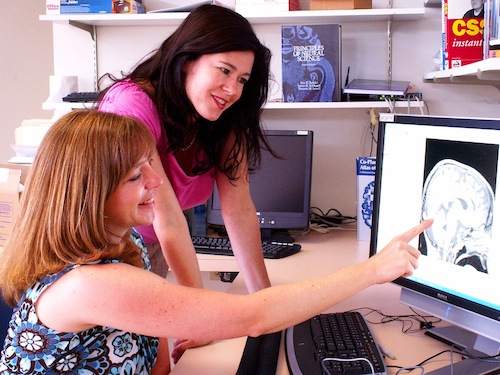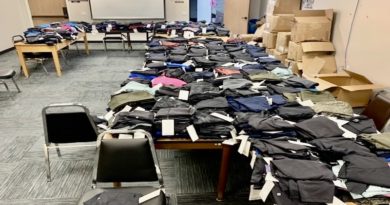Daily Business Report-Sept. 16, 2016
Dr. Karen Pierce and Dr. Lisa Eyler with the GeoPref Autism test. (Courtesy of RightEye LLC)
UCSD Researcher’s Test Used
To Detect Early Stages of Autism
RightEye LLC, a health technology company using eye tracking to revolutionize vision performance and patient care, announced that it has acquired the exclusive rights to two internationally recognized eye movement tests — one developed by a UCSD researcher — that help doctors more accurately and objectively identify early stages of autism in children 12 to 40 months old, and aids in detecting Parkinson’s disease in patients of all ages.
The tests, which are based on extensive clinical studies, help identify both disorders earlier and more accurately, which can lead to earlier and more appropriate intervention.
RightEye’s newly acquired test to identify autism is the GeoPref Autism Test, developed by a leading researcher in understanding autism, Karen Pierce, an associate professor in the Department of Neurosciences at UCSD and co-director of the UCSD Autism Center of Excellence. The test uses eye-tracking technology to compare the amount of time children spend looking at videos of people with the amount of time they spend looking at videos of geometric shapes.
According to peer-reviewed research, children with healthy brains will spend more time looking at the videos containing faces. This new test results in autism identification in one in five cases, and identifies children for further testing in nearly half of cases, allowing for the early therapy intervention that can have a profound impact on outcomes. The American Pediatric Association recommends intervention before age 3, yet often children are not diagnosed until later.
“In developing the GeoPref Autism Test, my goal was to make it easier, faster and more affordable to identify toddlers at risk for autism,” said Pierce. “By partnering with RightEye, I knew that I would be able to make my test more accessible to health care providers and parents of young children who are seeking answers about an often-misunderstood and late-diagnosed disorder.”
______________________________
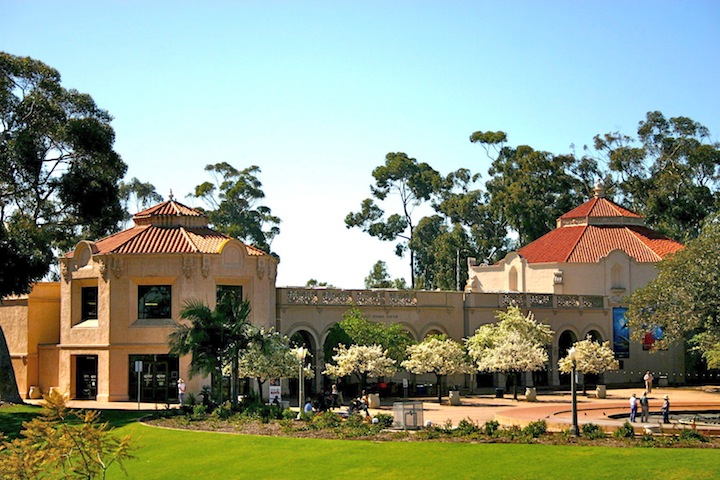
Reuben H. Fleet Science Center
Changes Name; Announces
Major Transformation
The name of the Reuben H. Fleet Science Center vanishes today, replaced by a new name signifying a major transformation of the Balboa Park institution.
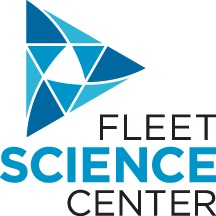
Effective today, the center will be known as the Fleet Science Center. The new brand identity is the realization of the Fleet’s expanded vision and extended role as a countywide organization.
All this came about as a result of studies the institution carried out in 2014 that led to a strategic plan for change.
“The Fleet is transforming from a museum in the park to a countywide organization devoted to building and supporting communities rich in science learning,” said a Fleet announcement. “This includes expanding its relationship with schools to provide integrated teacher professional development, science workshops and afterschool programs in support of both teachers and students.
“It also includes partnering with community organizations to bring science into San Diego neighborhoods so that all San Diegans have access to the transformative power of science.”
“While working on the strategic plan, we realized the direction we were charting was a departure from the associations people typically have of the Reuben H. Fleet Science Center,” said Steven Snyder, CEO. “Most people tend to think of us as the science center in Balboa Park with the IMAX Dome Theater, planetarium and hands-on exhibits.”
Snyder said the Fleet Science Center is evolving to a countywide organization that reaches across all of San Diego. “We are committed to transforming the way people of all ages access the power of science,” he said. “Our vision is to engage our communities in the pursuit of our shared scientific future-to make the world a better place. The rebranding is a way of making this transition official and helping to reinforce that we are an organization dedicated to science learning, in addition to being the most-visited museum in Balboa Park.”
As part of the strategic plan, the Fleet has launched new events and begun
developing its own exhibitions and new on-site events. This includes the
popular and immersive exhibition, Taping Shape, made entirely of packing tape; the loud, messy and shocking live science show, Don’t Try This at Home; and the highly interactive Impossible Science Festival.
The Fleet also began a community program, partnering with STEM-focused (science, technology, engineering and math) organizations to bring 52 Weeks of Science, a program that provides a free science event each week, to the Barrio Logan and Logan Heights neighborhoods.
The primary web address for the Fleet Science Center changes from rhfleet.org to fleetscience.org.
______________________________
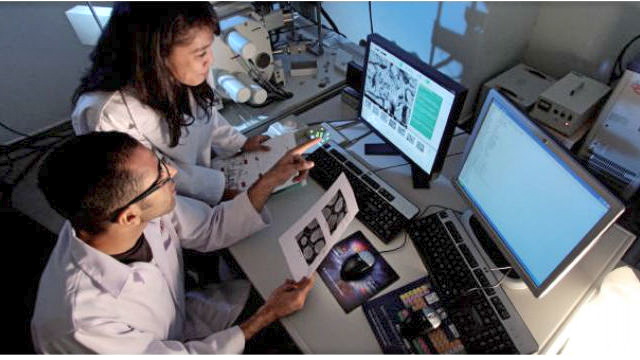
San Diego’s High-Tech Sector Boasts
$116,000 Average Pay, $52B Footprint
Times of San Diego
San Diego County’s innovation economy grew to $52 billion last year, accounting for nearly one-quarter of the region’s gross domestic product, according to CONNECT.
The report from the organization that nurtures high-tech startups also found that 405 startup companies were created in the San Diego area in 2015, the third year in a row that the total exceeded 400. Last year’s startups created over 1,600 jobs.
“This is further proof that San Diego’s innovation economy has matured to a point where it’s a vital part of our economic future,” said Mayor Kevin Faulconer, who released the report at a co-working space in Little Italy. “It’s no wonder why more and more smart, creative people and businesses are choosing San Diego as their home.”
CONNECT’s 11th annual Innovation Report showed San Diego County ranked first in California for life sciences startups, and fourth overall for tech startups after Los Angeles County and the two counties in Silicon Valley.
“For the past 11 years, CONNECT’s Innovation Report has acted as a roadmap for corporate leadership and policymakers to identify the region’s most pressing needs,” said Greg McKee, CEO of the nonprofit accelerator. “It’s no secret that the innovation economy is critical to the region’s prosperity, but more importantly innovation is the cornerstone to ensuring that San Diego keeps its place on the global stage long into the future.”
The startup companies launched in 2015 included:
• 255 software companies
• 82 life sciences companies
• 50 communications, computer and electronics companies
• 8 aerospace, navigation, and maritime technology companies
• 7 environmental technology companies
•3 recreational goods manufacturing companies
Of the startups over the past two years, 63 were set up in Carlsbad, 54 in downtown San Diego, 52 in Sorrento Valley, 46 in Carmel Valley and 44 in La Jolla, according to the CONNECT report.
Other findings were that San Diego tech companies received $1.2 billion in venture capital, raised $187 million in initial public offerings, and received over $1 billion in federal grants for scientific research.
To view the full report, click here
— City News Service contributed to this article.
______________________________
San Diego County Jobless Rate
Drops To 5 Percent in August
The unemployment rate in the San Diego County dropped to 5 percent in August, down from a revised 5.3 percent in July and below the year-ago estimate of 5.2 percent, the State Employment Development Department reported today.
This compares with an unadjusted unemployment rate of 5.6 percent for California and 5 percent for the nation during the same period.
Between July and August 2016:
Total nonfarm employment decreased from 1,420,800 to 1,420,100, a loss of 700 jobs. Agricultural employment increased by 100 jobs, or 1.1 percent.
- The largest over-the-month decline was reported in leisure and hospitality (down 2,000). Arts, entertainment, and recreation and accommodation and food services, each downsized by 600 and 1,400 jobs respectively.
- Three other sectors also posted month-over job losses: construction and manufacturing (down 400 each), and government (down 300).
- Trade, transportation, and utilities reported the greatest month-over gain, adding 1,000 jobs. Gains in this industry included retail trade (up 500), transportation, warehousing, and utilities (up 400), and wholesale trade (up 100).
Between August 2015 and August 2016:
Total nonfarm employment increased 25,100 jobs, or 1.8 percent. Agricultural employment declined by 100 jobs, or 1.1 percent.
- Government reported the greatest year-over gain, adding 6,200 jobs. Local government (up 4,000) contributed to more than 64 percent of the employment gain in this sector. State government and federal government increased by 1,400 and 800 jobs respectively.
- Seven other sectors also added jobs over the year, but the most significant gains came from leisure and hospitality (up 6,100) and educational and health services (up 6,000).
- Construction was the only sector to report year-over job loss (down 200).
- Mining and logging, and information reported no growth over the year.
______________________________
Cubic Wins $35.5 Million Contract from
Singapore Land Transport Authority
Cubic Corporation has won a $35.5 million contract to supply fare collection equipment for Singapore Land Transport Authority’s future rail line. The contract includes the design, development, test and integration with Land Transport Authority’s current fare collection system.
Under the agreement, Cubic will deliver a full suite of devices for deployment in stations and operations depots. The contract marks Cubic’s renewal of customer relations with LTA that began with the region’s original fare collection system in the 1980s, followed by the 1999 win to supply Cubic’s General Ticketing Machines. The system was the first of its kind to issue and recycle contactless smart cards for single trips as well as topping up reloadable smart cards using notes, coins and bankcards.
The LTA’s Thomson-East Coast Line is under construction with the first stage to be launched in 2019 and the last stage to be completed in 2024.
______________________________
Barons Market to Hold Job Fair
To Pick Employees for North Park Store
Barons Market, which plans to open a new store in North Park this year, will conduct a job fair Sept. 29 to Oct. 1 to hire more than 40 North Park residents as employees.
Applicants will meet with Barons staff from 10 a.m. to 4 p.m. on each day at its soon-to-open seventh store, located at 3231 University Ave. The market plans to announce and hire its official employees by mid-October, providing enough time for training prior to the store’s opening this fall.
“We’re looking for employees that share our values and personify the traits that made us fall in love with North Park in the first place — community pride, hunger for quality products and a fun-loving spirit,” says Rachel Shemirani, Barons’ vice president of marketing. “Barons Market in North Park will be unlike any of our other six locations, and our commitment to good food and good prices will never change.”
Candidates cn download a job application here or pick one up at the job fair.
______________________________
USD ranked 86th in Best Colleges Report
The University of San Diego was ranked 86th among the nation’s top national universities by U.S. News & World Report in its 2017 Best Colleges rankings.
As the youngest private university included on the list of Best National Universities, USD improved by three positions from the 2016 rankings.
U.S. News & World Report also recognized USD in four other areas:
- Best Engineering Schools Whose Highest Degree is a Bachelor’s or Master’s – USD ranks 13th.
- Best Business Programs – USD ranks 94th.
- Best Schools for Vets.
- A+ Schools for B Students
“The University of San Diego’s outstanding performance in the 2017 U.S. News & World Report’s Best Colleges rankings is affirmation of USD’s world-class academic programs, award-winning faculty and thriving alumni network,” said USD President Dr. James T. Harris III.
______________________________
Poverty Rate Nearly 16 Percent
In San Diego, Exceeding Nat’l Average
By City News Service
The poverty rate in San Diego last year was 15.6 percent, roughly the same as the year before and above the national rate of 14.7 percent, according to federal census data released Thursday.
According to the San Diego-basedCenter on Policy Initiatives, the median family income of $67,871 in 2015 was also about the same as 2014.
The federal poverty line is $12,082 a year for a single person, or $24,036 in combined income for two adults with two children, regardless of variances in cost-of-living in different geographical areas.
“The nearly 16 percent of San Diego households living below the federal poverty line would be struggling even if they lived in the poorest areas of the U.S., like Mississippi or Alabama,” said CPI Deputy Director Kyra Greene.
“Incomes this low make surviving in a high cost city like San Diego extremely challenging,” Greene said. “Families have to make impossible choices and sacrifices just to survive.”
The CPI, which advocates for working families, said the federal data showed 19.7 percent of the city’s children live in poverty, while 32.2 percent of families with children that are headed by a single adult have incomes below the official poverty line.
By race, the poverty rate last year was 23.4 percent for Latinos, 21.8 percent for blacks and 10.8 percent for whites.
The Census Bureau also released data that doubled the official poverty line to reflect economic hardship in high-cost cities such as San Diego. The CPI said the figures show 31.7 percent of area households — comprising over 432,000 people — have incomes less than the 200 percent standard.
______________________________
Personnel Announcements
Philippe Raffy Joins StatRad Executive Staff
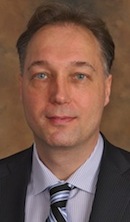
StatRad, a provider of teleradiology services, has added Philippe Raffy to its executive team. As vice president of data sciences and clinical development, Raffy will drive StatRad’s machine learning strategy and lead the development of StatRad’s next generation diagnostic workstation.
Raffy has over 15 years of experience as a software engineering, clinical research and data science leader in the health care IT industry, growing teams and expanding businesses. His most recent leadership roles include VIDA Diagnostics, Vital Images (now Toshiba) and R2 (now Hologic). He holds 14 patents, has co-authored 59 peer-reviewed publications and is the recipient of multiple awards.
Raffy helped develop the first CAD system for lung nodules. He also developed and validated predictive models of treatment outcomes to improve patient selection in lung volume reduction therapies.
______________________________
Cape Rey Carlsbad Names General Manager
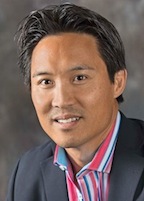
Thomas Lee has been appointed general manager for Cape Rey Carlsbad, a Hilton Resort situated along the North County coastline.
A seasoned hospitality professional and avid outdoor enthusiast —who even spent a few years playing on the AVP Pro Beach Volleyball circuit —Lee most recently served as general manager of the Pacific Edge Hotel, a Joie de Vivre property in Laguna Beach. A longtime veteran of the hospitality industry, Lee has held several senior-level positions within Davidson Hotels and Resorts working with properties within the Hyatt, Hilton, Starwood and Intercontinental portfolios.
Prior to joining Davidson, Lee played a key role in high profile hospitality and entertainment projects in Los Angeles including the re-launch of the historic Hollywood Roosevelt Hotel and the Governor’s Ball for the Academy Awards. Lee began his hospitality career at the Sofitel in Beverly Hills and the Bel Age Hotel on the famed Sunset Strip.

